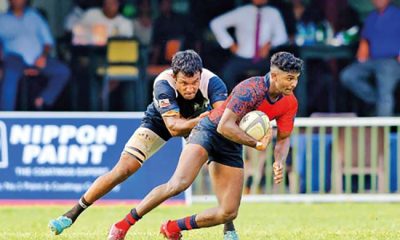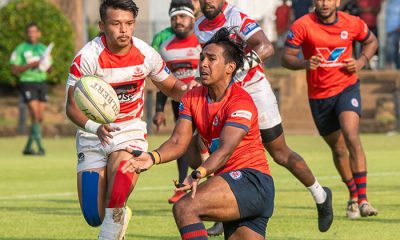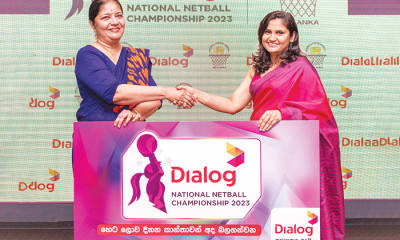Sports
Only if Buultjens knew that teams have pulled out of rugby sevens!
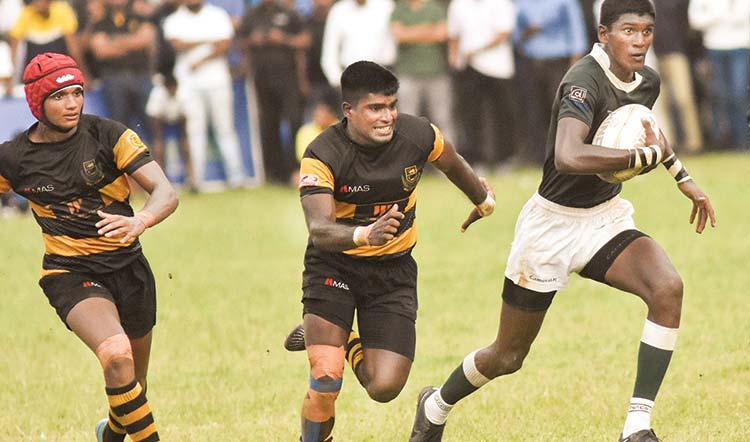
By A Special Sports Correspondent
There is trouble brewing for the Sri Lanka Schools Rugby Football Association (SLSRFA) ahead of the much looked forward to under 19 ‘Elite’ Schools Rugby Sevens because several schools are reported to make themselves unavailable for the two- day competition.
There are several pros and cons to this issue of non-availability of teams. But what should be underscored is that all schools must remember one valuable dictum that even those participating at The Olympics honour; which is ‘participating is more important than winning’. At the time of writing as many as 10 schools have given enough signs that they’ll not be taking part in the competition citing the upcoming O’ Level Exam and also injuries to key players.
One must remember that those who pull out of the competition will be labeled as spoilers. This attitude of pulling out or boycotting a tournament, when at school level, sparks the attitude in individuals to go against a system or be selfish. Are these schools which are struggling to field their best team for the schools rugby sevens giving the message that they don’t have a second-string outfit or junior team in their ranks and are bankrupt for players?
The good news for rugby fans is that the top teams which dazzled at the recently concluded Zahira Centenary Sevens have made themselves available for the tournament which will be worked off at the Royal Sports Complex and CR&FC, according to media reports. St. Peter’s, which won the Cup Championship at the Zahira Sevens, are slotted in with Maliyadeva Kurunegala in group ‘H’ while Isipatana College, which finished as runners-up in that tournament, are pooled in group ‘A’ with St. Benedict’s College. Royal College which won the Plate Championship at the Zahira Sevens are slotted in with Carey and Nalanda in group ‘D’. If some of the popular rugby playing schools opt to pull out then it would leave the doors open for lesser-known rugby playing schools to fill the voids and ensure that the ‘tournament goes on’.
One little error in calculation that is troubling this tournament is the scheduling of the Zahira Sevens too close to the Elite schools rugby sevens. You cannot possibly ask schools to play back-to-back sevens tournaments with just a few days of rest between tournaments. Injuries to players are a key concern for school rugby teams and don’t forget that there is a league tournament – where the stakes are so high- also on the cards and scheduled to commence in June this year. This writer can say so because the Zahira Sevens was conducted with the blessings of the SLSRFA; the rugby authority that draws up the school rugby calendar for the year. The Zahira Sevens was conducted on March 2 and 3 in Colombo with the participation of the best 16 schools teams in the island. There is a school of thought that having two fiercely competitive school rugby sevens tournaments too close to each other is not a good idea and will drain the players of their energies.
Much money and time are invested on school rugby and to prepare the players for traditional and tournament matches. Also, one must remember that the schools 15-a-side season has two tournaments which is followed by trials to select a team for the junior Asian Championship. Schoolboys have to also balance their education with sports. All that must be achieved while in school; before these boys reach the age 21. There are also schoolboys who take part in more than one sport and also dabble in activities outside sports. Some also have dreams of entering university and a handful have to satisfy goals of parents; individuals who want to live their dreams through their children. Hence the pressure on children who do sports and studies can build up to reach breaking point in an individual.
School rugby is so commercialized these days. Just look at the attire of a school rugby player and observe the number of logos of various sponsors stitched to the playing garment. Then there must be the expectations of sponsors too!
This flooding of sponsors to school rugby can throw out existing traditions. No one talks about the Philip Buultjens Trophy which was on offer for the schools rugby sevens winners. Do the school authorities still keep this trophy on display at this tournament and award it to the winners? So many companies engaged in the communication business are involved in rugby and they have their own trophies which they wish to see been given away to winners at the podium. For the record the Philip Buultjens Trophy was first on offer at the schools rugby tournament in 1975 and Trinity led by Rohan Sourjah won that tournament beating Royal 18-16 in the final. Just to talk about endurancein players of those days, the Trinity side was represented by the same seven players during the entire tournament; meaning the reserves were never used. (This information was taken from NeilWijeratne’s well compiled book titled ‘Sevens Saga’).
School rugby at present is thriving thanks to the support of old boys and sponsors. The SLSRFA must be thankful for that. This is because the schools section of Sri Lanka Rugby (SLR) is neither known to have the acumen to handle a complicated sport like rugby nor has it the connections to raise much needed funds for the game.
Many years ago, when the SLSRFA was run by able men like Lal Kumarasinghe (President) and Mohammed Zainudeen (Secretary) the schools tournaments were run with the precision of Swiss watches. Kumarasinghe would handle the tournament desk at schools tournaments by himself. He passed away in 1999. Those were the years of schools rugby and trouble makers were punished then and there with no favors granted because of school or family ties. But still there were politics involved in school rugby even then; especially when the SLR got involved in school rugby on occasions when a national team had to be selected for an overseas tournament.
In the year 1988 SLR received an invitation to compile a school side to contest the Roslyn Park Sevens in England. The team from Sri Lanka comprised Lasitha Guneratne (Captain), Sudesh. Abeysinghe, Asoka Jayasena, Rizwi Suhyb, Bindu Dandeniya, Thakshila Hettiarachchi, M.Thaam, Ruwan Ranasinghe, Hilmy Saheed and Rohan Ranarajah. The selection trials for this tour were conducted in March 1988 and there were disputes regarding who should be coach. After that tour, the inter-school rugby sevens, worked out in August that year, produced an invincible champion side in Kingswood. Sadly, none of the players from the champion Kingswood team got the opportunity to be included in this tour; hence their potential remained untapped from the perspective of being members of the junior national sevens team.
Times have changed and when a tournament uses the name ‘Elite’ sevens one cannot possibly expected a person like Philip Buultjens (A versatile sportsman produced by St. Anthony’s Katugastota) to be remembered in rugby these days. The same can be said about Noel Gratiaen; in whose name the Gratiaen Cup was awarded to the winners of the game between Colombo Schools and Outstation Schools. Gratiaen was a lawyer and also held post of President of SLR in the years 1948 and 1950. People with authority prefer to associate names of mobile phone companies with sports events of today and conveniently forget about our rugby legends.
Coming back to the upcoming Schools Elite sevens the rugby fraternity hopes that most of the team’s that are experiencing the unavailability of players will put their ‘houses’ in order and live up to the spirit of sportsmanship. This April is the time for both the New Year and annual traditional games. A well- conducted rugby event can add to the glamour of the festive season.
Sports
England face Australia in the battle of champions
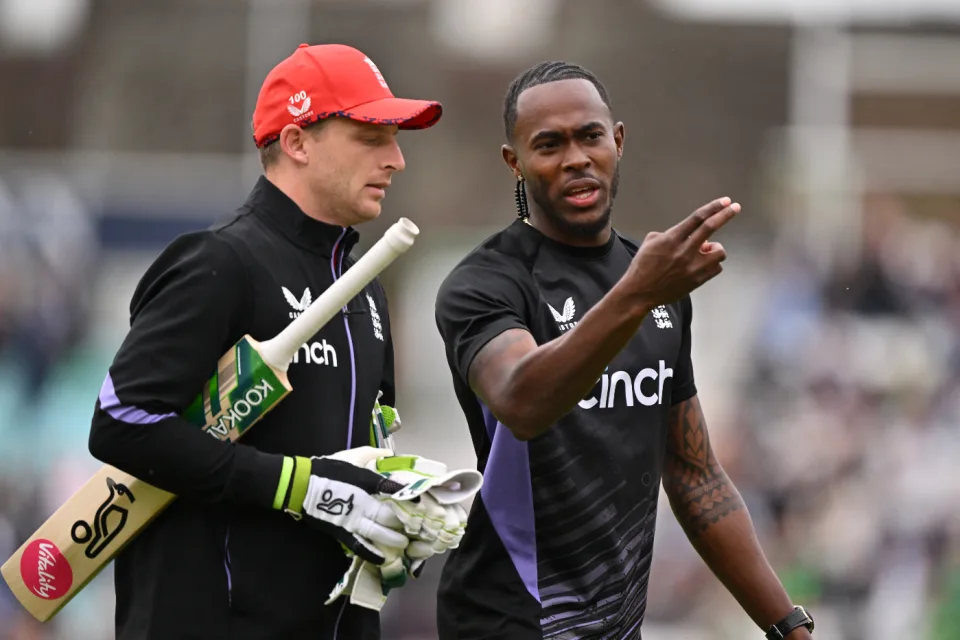
The first truly heavyweight clash of this expanded T20 World Cup format comes freighted with both history and subplots. A rematch of the 2010 World T20 final at Kensington Oval, the match pits Jos Buttler’s defending champions – who are aiming to become the first team to retain the trophy – against the Australian winning machine, victors at the 2021 edition and current world title-holders in Test and ODI cricket. And that’s before you throw in the Ashes for afters.
Already there is added pressure on England, after the rain in Bridgetown led to a share of the points in their opener against Scotland (and that having conceded 90 runs from 10 overs without taking a wicket in a tepid bowling display). Lose to their oldest rivals and it will leave their Super 8 prospects open to being waylaid by the perils of net run-rate calculations, or worse.
The Scotland match was the third abandonment in five suffered by England, after a rain-affected home series against Pakistan, which has clearly hampered their readiness for this campaign after almost six months without playing T20 together. It does not take much for a side to click in this format – and England looked in decent shape when they did get on the field against Pakistan – but Buttler will be anxious for things to go their way on Saturday, if only to avoid further questions referencing the team’s disastrous ODI World Cup defence last year.
Australia, under the laidback leadership of Mitchell Marsh would love nothing more than to add to the English sense of jeopardy – having helped bundle them out of the tournament in India on the way to taking the crown. Their head to head record is less impressive in T20 however, with England having won six of the last seven completed encounters, as well as that 2010 final.
Despite a wobble with the bat, Australia avoided mishap against Oman earlier in the week, the experience of David Warner and Marcus Stoinis shining through in difficult batting conditions. Surfaces in the Caribbean – not to mention those games staged in the USA – have already had teams scratching their heads; rather than the “slug-fest” England had prepared for, following a high-scoring tour of the Caribbean in December, it looks as if boxing smart may be the way to go.
Speaking of Warner, this could be the last time he faces up against England in national colours – and another match-winning contribution would likely reduce the chances of them meeting again in the knockouts. On the other side of the card is Jofra Archer, fresh from an emotional maiden outing at Kensington Oval and ready to take on Australia for the first time in any format since 2020. Can Mark Wood fire up England’s campaign, as he did during last summer’s Ashes? Will Pat Cummins be back to harass the old enemy once again? Seconds out, it’s almost time to rumble.
Cummins is set to return after being rested for the Oman game, which saw Mitchell Starc leave the field with cramp. Starc is understood to be fine and could keep his place – which would likely see Nathan Ellis miss out. Marsh is still not fit to bowl, with Australia likely to continue with the allrounder combination of Stoinis and Maxwell to give them cover.
Australia (probable XI): David Warner, Travis Head, Mitchell Marsh (capt), Glenn Maxwell, Marcus Stoinis, Josh Inglis (wk), Tim David, Pat Cummins, Nathan Ellis/Mitchell Starc, Adam Zampa, Josh Hazlewood
The one change England may consider is Reece Topley coming in for Wood, with the expectation that there will be some rotation among the seamers through the course of the tournament.
England (probable XI): Phil Salt, Jos Buttler (capt & wk), Will Jacks, Jonny Bairstow, Harry Brook, Liam Livingstone, Moeen Ali, Chris Jordan, Jofra Archer, Adil Rashid, Reece Topley/Mark Wood
[Cricinfo]
Sports
South Africa up against their bogey team in batter-unfriendly New York

Once is coincidence, twice is a clue, and three times is proof.
To paraphrase Agatha Christie, that is the narrative around South Africa’s meeting with Netherlands at this T20 World Cup.
The Dutch beat South Africa at the 2022 tournament and ended their semi-final hopes in a match where South Africa appeared to be sleep walking, and then beat them again at the 2023 ODI World Cup, where they exposed South Africa’s vulnerability in the chase. If they to do the treble, not only will Netherlands take the lead in Group D, but they will offer conclusive evidence of the threat they pose to Full Members, especially South Africa.
Of course, it will take some doing after South Africa’s opening performance against Sri Lanka, where they reduced their opposition to their lowest T20I total and chased it down in fairly straightforward fashion thanks to the most stable middle-order of their white-ball era. In Aiden Markram, Tristan Stubbs, Heinrich Klaasen and David Miller, South Africa have bankers and big-hitters and, for this match, they also have the advantage of experience. They’ve already played at Eisenhower Park, and have first-hand knowledge that run-scoring doesn’t come easily;Klassen said they are prepared to use their “cricket brains” and play “smarter cricket”.
But the conditions could be good news for Netherlands, who are not naturally a line-up of big hitters and build their innings on a foundation of turning ones into twos. In other words, they tend to take a slightly more conservative approach to batting, which may work well here, but they’ll be wary of the uneven bounce of the surface and will have to come up with plans to counterattack especially against South Africa’s seamers. Their own bowlers were exemplary in Dallas and will look to build on that performance against a line-up that will likely be more proactive than Nepal’s, but who they have managed to keep quiet not once, but twice in the past. Third time’s the charm, they say.
Anrich Nortje’s stunning return to form against Sri Lanka means South Africa may not have to tinker with the bowling combination, and Gerald Coetzee and Tabraiz Shamsi may have to wait their turns to get a game. The batting line-up should be unchanged, with no space for Ryan Rickelton yet.
South Africa: Quinton de Kock (wk), Reeza Hendricks, Aiden Markam, Tristan Stubbs, Heinrich Klaasen (wk), David Miller, Marco Jansen, Keshav Maharaj, Kagiso Rabada, Ottneil Baartman, Anrich Nortje
Conditions in New York may tempt Netherlands to include an extra seamer and they have Kyle Klein in their squad. But it could come at the expense of a shortened batting line-up and they may not want to risk that.
Netherlands: Michael Levitt, Max O’Dowd, Vikramjit Singh, Sybrand Engelbrecht, Scott Edwards (capt, wk), Bas de Leede, Teja Nidamanuru, Logan van Beek, Tim Pringle, Paul van Meekeren, Vivian Kingma
[Cricinfo]
Latest News
Mustafizur, Rishad, Hridoy dazzle in Bangladesh’s tight two-wicket win over Sri Lanka
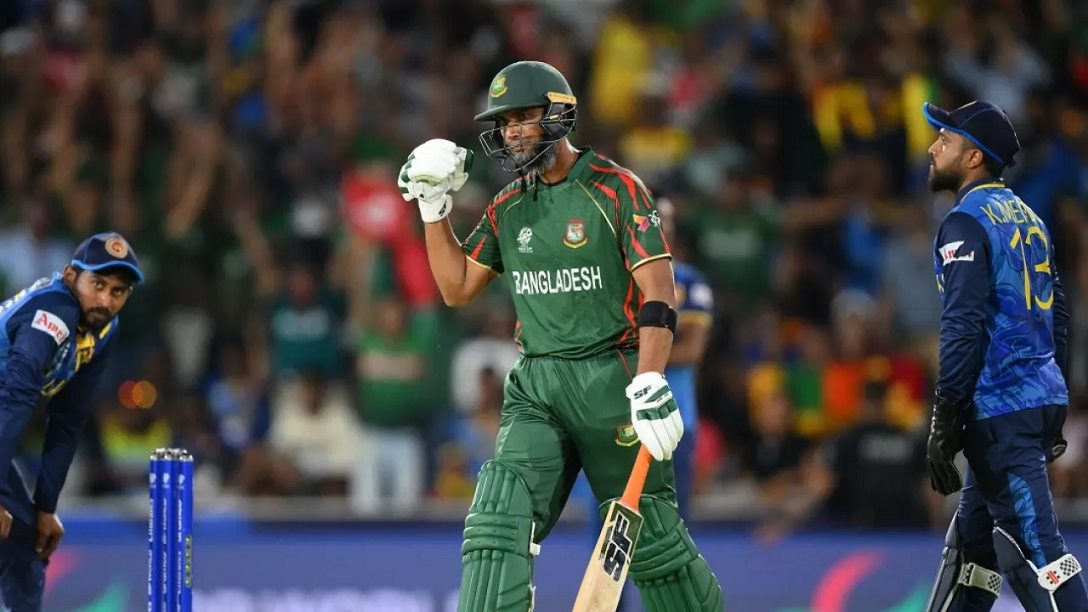
Nuwan Thushara’s last over brought Sri Lanka screaming back into the match,as he first bowled Rishad Hossain, and then nailed Taskin Ahmed in front of the stumps with a pinpoint swinging yorker. This left Bangladesh eight wickets down, with 12 runs still to get.
However, the experienced Mahmudullah was at the crease for Bangladesh, and despite some further nervy moments, pushed Bangladesh across the line off the last ball of the 19th over.
But this was a match chiefly decided by Bangladesh’s own outstanding bowling. Mustafizur Rahman was the best among them, using shorter lengths and his cutters efficiently, to claim figures of 3 for 17. Rishad Hossain’s three-for through the middle overs also kept Sri Lanka quiet.
Mustafizur was instrumental in Sri Lanka’s downward spiral through the middle overs, which culminated in a crash-and-burn end. Ultimately, their inability to find boundaries, or even rotate strike against good Bangladesh bowling resulted in their downfall. A score of 125 for 9 always seemed poor on a decent pitch, even if their bowlers made a match of it in the end.
Brief scores:
Bangladesh 125 for 8 in 19 overs (Towhid Hridoy 40, Litton Das 36; Dhanajaya de Silva 1-11, Nuwan Thushara 4-18, Wanidu Hasaranga 2-32, Matheesha Pathirana 1-27) beat Sri Lanka124 for 9 in 20 overs (Pathum Nissanka 47, Dhananjaya de Silva 21; Tanzim Hasan Sakib 1-24, Taskin Ahmed 2-25, Mustafizur Rahman 3-17, Rishad Hossain 3-22) by two wickets
[Cricinfo]






